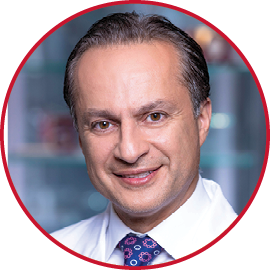
I was one of the first adopters of femtosecond laser technology for cataract surgery in the United States, and my surgery center was one of the first in the country to purchase and use two different laser systems. We bought our first laser (LenSx Laser System, now Alcon) right after its FDA approval in 2011. The following year, we purchased a Catalys (now Johnson & Johnson Vision). Over the years, I have trialed all the available laser platforms and found all of them, regardless of the manufacturer, to be excellent and reliable. I can say confidently that femtosecond laser technology has had a significant medical and economic impact on my practice and surgery center. Surgeons such as myself were correct when we predicted that this technology would be disruptive to the world of cataract surgery.
I was excited when CRST invited me to review my experience with nuclear fragmentation using femtosecond laser technology. My partners—all of whom are also high-volume cataract surgeons—and I often discuss our laser cataract surgery cases. The standing joke between us is that using the technology is almost like cheating at cataract surgery because the hardest cases become nearly routine. I insist on using the laser on the densest lenses and postvitrectomy eyes and for all advanced technology IOL cases. I also prefer it for eyes with pseudoexfoliation and zonular issues. The femtosecond laser creates a perfectly centered, round capsulotomy, which is important for advanced technology IOLs.
FRAGMENTATION TECHNIQUES
Every step in cataract surgery affects the next. Irrespective of the chosen nuclear disassembly technique, a perfect lens opening makes the entire case smoother. When I use femtosecond laser technology, my ideal capsulotomy size is 5 to 5.2 mm in eyes with soft to moderately dense nuclei and 5.3 to 5.5 mm in eyes with hard to brunescent nuclei.
Before I had a femtosecond laser, I typically used a stop and chop technique during my standard cataract cases. Since beginning to perform laser cataract surgery, I have used almost every pattern of nuclear softening and settled on the sextant pattern without grid treatment for nearly 100% of my cases. The technique is fast and boasts a short treatment time, but it still allows an excellent red reflex and easy disassembly of the nucleus with fragmentation techniques such as divide and conquer, stop and chop, phaco flip, phaco bowl, and phaco chop.
Surgeons must find their comfort zone for fragmentation and use the technique that works best in their hands. Over the past 10 years, for me, that is phaco chop. First, I prechop the treated nucleus into six pieces along the scored lines/divisions. In many cases, nuclear division is already complete. In this situation, I simply push the pieces apart with a chopper and phaco tip.
I do not like laser grid patterns because they make my view harder, can prolong surgery, and can force me to chase after small fragments in the anterior chamber during phacoemulsification. I use a venturi platform exclusively, which has significantly reduced my phaco time. I essentially point at and grab the nuclear fragments without occlusion. I keep the phaco tip in the middle of the lens at the iris plane and let the pieces come to me. This strategy has significantly reduced my phaco time and energy use. In my hands, less than 2 seconds of total phaco time is common during a laser cataract surgery procedure. Cortical removal is easy to perform afterward.
CONCLUSION
Femtosecond laser systems for cataract surgery have and will continue to be disruptive technology. I expect laser cataract surgery to be the dominant mode of cataract surgery for years to come. As laser technology evolves, I anticipate that it will become possible to measure and correct—in real time—all the major steps of cataract surgery. The correction of mild to moderate corneal astigmatism may be simplified by the adoption of automated astigmatic keratotomy treatments.




